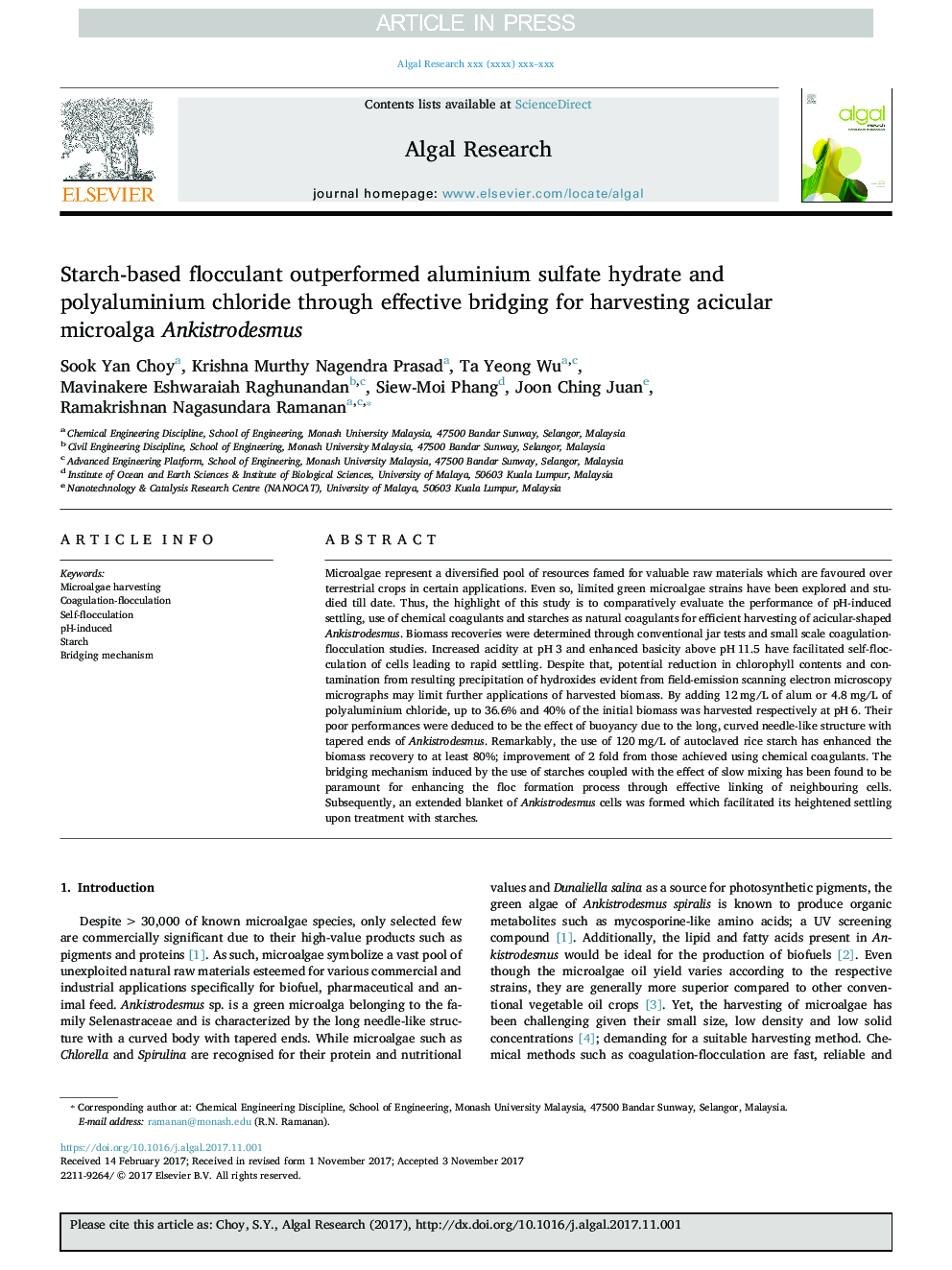| Article ID | Journal | Published Year | Pages | File Type |
|---|---|---|---|---|
| 8086386 | Algal Research | 2018 | 11 Pages |
Abstract
Microalgae represent a diversified pool of resources famed for valuable raw materials which are favoured over terrestrial crops in certain applications. Even so, limited green microalgae strains have been explored and studied till date. Thus, the highlight of this study is to comparatively evaluate the performance of pH-induced settling, use of chemical coagulants and starches as natural coagulants for efficient harvesting of acicular-shaped Ankistrodesmus. Biomass recoveries were determined through conventional jar tests and small scale coagulation-flocculation studies. Increased acidity at pHÂ 3 and enhanced basicity above pHÂ 11.5 have facilitated self-flocculation of cells leading to rapid settling. Despite that, potential reduction in chlorophyll contents and contamination from resulting precipitation of hydroxides evident from field-emission scanning electron microscopy micrographs may limit further applications of harvested biomass. By adding 12Â mg/L of alum or 4.8Â mg/L of polyaluminium chloride, up to 36.6% and 40% of the initial biomass was harvested respectively at pHÂ 6. Their poor performances were deduced to be the effect of buoyancy due to the long, curved needle-like structure with tapered ends of Ankistrodesmus. Remarkably, the use of 120Â mg/L of autoclaved rice starch has enhanced the biomass recovery to at least 80%; improvement of 2 fold from those achieved using chemical coagulants. The bridging mechanism induced by the use of starches coupled with the effect of slow mixing has been found to be paramount for enhancing the floc formation process through effective linking of neighbouring cells. Subsequently, an extended blanket of Ankistrodesmus cells was formed which facilitated its heightened settling upon treatment with starches.
Related Topics
Physical Sciences and Engineering
Energy
Renewable Energy, Sustainability and the Environment
Authors
Sook Yan Choy, Krishna Murthy Nagendra Prasad, Ta Yeong Wu, Mavinakere Eshwaraiah Raghunandan, Siew-Moi Phang, Joon Ching Juan, Ramakrishnan Nagasundara Ramanan,
